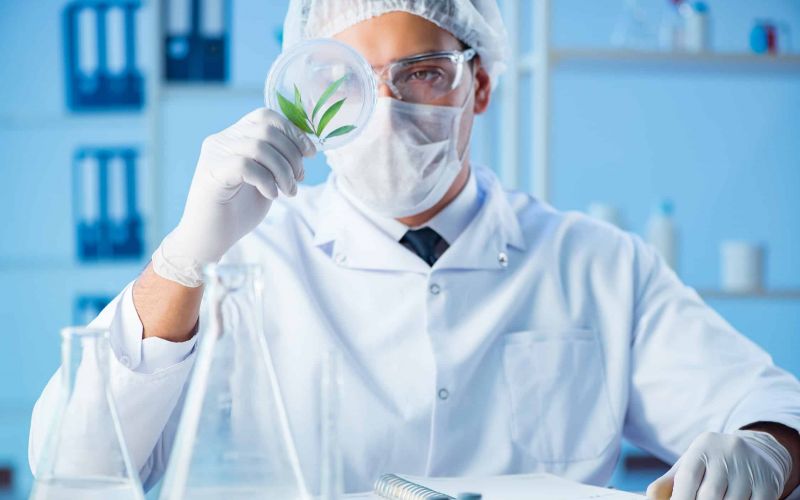
The History of Cannabis Testing and Oklahoma Regulations
Although centuries worth of evidence exists of cannabis research, analysis and processing, one of the first documented chemical experiments to determine the constituents of cannabis was conducted in 1896. Several years later, the researchers were able to correctly identify the extracted and isolated cannabinol from the exuded resin of Indian hemp as C21H26O2. In 2015, the first government standards for testing were proposed in the Colorado legislature, when potency and microbial testing became mandatory in the state.
Over the next several years, cannabis testing regulations increased, such as residual solvent analysis and pesticides. As medical and recreational cannabis is legalized, and public consciousness grows across the United States, awareness of contaminants and demand for laboratory testing also develops. Movements to unify cannabis industry standards with existing testing organizations such as ASTM International (ASTM D37) or International Standards Organization (ISO/IEC 17025) are drawing attention.
During cultivation, cannabis plants absorb everything to which they are exposed. As cannabis is still an illegal substance at the federal level, no federal standards exist for testing. Instead cannabis testing laboratories have had to adapt standard operating procedures and programs from multiple sources including the food, health, cosmetic and pharmaceutical industries.
States that have legalized cannabis consumption have generally required lab testing for levels of cannabinoids and terpenes, as well as pesticides, solvents, yeast, mold and pathogens. These requirements are especially critical for testing medical marijuana, as patients are potentially medically fragile or have weakened immune systems and are therefore more susceptible to contaminates inhaled or digested.
How Does Cannabis Testing Work?
Testing cannabis is not as simple as isolating a section of the plant and running a test or two. One difficulty of analyzing product is possessing the ability to isolate and identify many compounds potentially present, even at extremely low concentrations, as tiny as parts-per-million or parts-per-billion. For example, hundreds of pesticide residues could be present in a single analytical run.
New technologies advance regularly, and labs must maintain state-of-the-art equipment to perform an accurate analysis. Additionally, as cultivation know-how expands, medical marijuana patients are paying more and more attention to cannabinoid and terpene profiles when selecting cannabis strains to specifically treat their conditions. The need for this type of product detail is a drive toward lab testing, which is the only way to know the cannabinoid makeup and terpene profile of the cannabis product being consumed.
Oklahoma Cannabis Testing Regulations
Cannabis in Oklahoma is legal for possession and use for medicinal purposes with a state-issued license to adults 18 and older. According to the Associated Press, currently 220,000 patients, which is more than 5% of the state population, are enrolled in Oklahoma’s medical cannabis system, with 1,600 dispensary licenses issued. Tax receipts show medical marijuana sales passed $258 million through October 2019. State activists are working towards the legalization of recreational marijuana in 2020, which would allow adults 21 and older to possess, cultivate and purchase cannabis from licensed retailers under the petition. The filed petition additionally calls for a 15% excise tax on marijuana sales, revenue from which would cover implementation costs and fund schools, drug treatment programs, and other public service programs.
Cannabis testing regulations in Oklahoma are ever-evolving since the legalization of medical possession and use in 2018. Currently, the law requires lab testing for the following categories: microbials, mycotoxins, residual solvents, pesticides, heavy metals, terpenoid potency, THC and cannabinoid potency. Further details within the regulations restrict commercial growers from transferring and selling medical marijuana, as well as processors from transferring, selling, or processing medical marijuana unless samples from each harvest batch or production batch have been tested for contaminants and passed.
On the laboratory side, these facilities may only accept samples of medical marijuana from commercial licensees or licensed patients or caregivers, and may only send samples to other licensed laboratories for reference testing. A medical laboratory director is mandated to be on-site during operational hours, and labs must develop policies to prevent the existence or appearance of conflicts of interest.
Cannabis Testing Regulations in Oklahoma
Residents of Oklahoma live in a state with a very successful medical cannabis program and government attention to precedents set by other states. Participants of this Sooner State program should ensure to inquire to purveyors if the products are tested by PureLabs, a state-of-the-art cannabis testing laboratory in Oklahoma City, Oklahoma. PureLabs services all Oklahoma cannabis cultivators, extract producers and infused product manufacturers with the most accurate, expedited, and consistent laboratory services. This company meets current Good Manufacturing Practices with a focus on ISO/IEC 17025 Certification. Be an informed consumer or consumer advocate!
cannabis testing, cannabis testing in oklahoma, cannabis testing regulations, cannabis tests, Oklahoma cannabis testing








